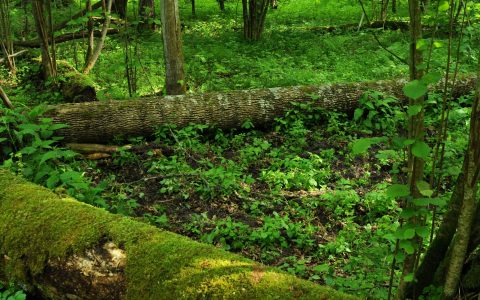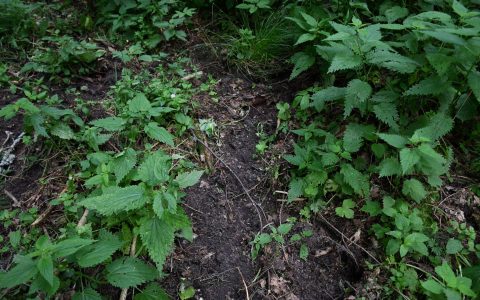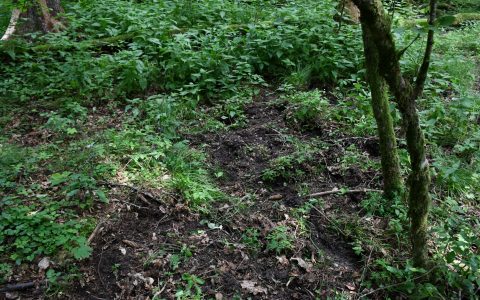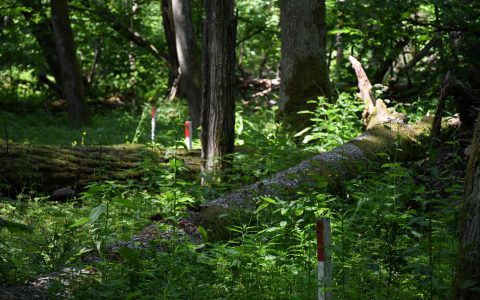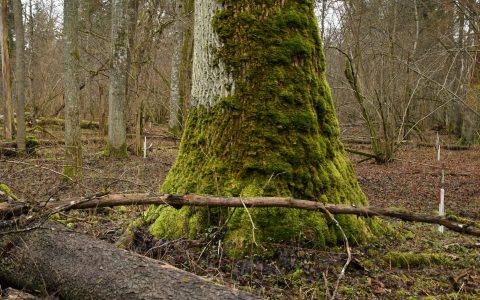Impact of wild boar rooting on the dynamics of the species composition of oak-hornbeam forest
- Project duration:
- 1975 – currently
- Project coordinator:
- Prof. dr hab. Bogdan Jaroszewicz (2005-currently) Prof. dr hab. Janusz Bogdan Faliński (1975-2004)
The fertile type of oak-hornbeam forest (Tilio-Carpinetum stachyetosum) is the forest community most frequently visited by wild boar in the Białowieża Forest. The wild boar is a large, omnivorous animal, but seasonally it is mainly herbivorous. Wild boar penetrates all forest and non-forest communities, however, some of them are cyclically preferred due to their higher food abundance. The spring geophytes are an important and renewable part of the food resources in this forest. The underground parts of the geophytes play equally the role of reserve organs (tubers, rhizomes, bulbs), as well as the role of vegetative propagules. Two of the 10 geophyte species in the herb layer of this fertile and humid forest are also equipped with aboveground storage organs (e.g. Ficaria verna and Dentaria bulbifera have tubers in leaf angles).
The field research methodology is based on regular observations of the wild boar rooting throughout the year. The observations consist of mapping the range and intensity (on a scale of 1-3) of wild boar rooting on two permanent research plots in the Tilio-Carpinetum stachyetosum forest community (each 20 days). In this part of the forest, an intensive rooting of the wild boar was observed earlier (1959-1975). Both areas are 0.64 ha each and are permanently divided into 100 squares (8 x 8 = 64 m2).
Among all types of local forest communities, the most frequently and most intensively rooted by wild boar is the most fertile and humid form of oak-hornbeam forest Tilio-Carpinetum stachyetosum. On average, about 35% of the area is rooted during the year. Quantitative studies allowed us to conclude that the forest fragments, which are more intensively used by wild boars, have a significantly higher contribution of geophytes in the total phytomass: in the underground and above-ground parts in spring, and in summer, i.e. after the disappearance of the green parts of geophytes – only in the underground part. Such relationships were also found directly in some species of geophytes (F. verna, Anemone nemorosa, Corydalis solida). A stimulating effect of wild boar rooting on the reproduction of geophytes by fragmentation of tubers, rhizomes and bulbs was revealed. The later experimental fragmentation of underground storage organs of F. verna and D. bulbifera and their cultivation in the experimental garden and in trays in the lab brought evidence of the importance of this phenomenon in their vegetative propagation. Breaking down the composed tuber of the first species and division of rhizomes in the latter one allow for at least three-fold increase in the number of their individuals per year, associated with intensive consumption of some portion of the underground organs.
Sondej I., Kwiatkowska-Falińska A.J. 2017. Effects of wild boar (Sus scrofa L.) rooting on seedling emergence in Białowieża Forest. Polish Journal of Ecology 65: 380-389. DOI: 10.3161/15052249PJE2017.65.4.007
Bober J. 2003. Rozmnażanie geofitów leśnych w warunkach naturalnych i laboratoryjnych. Wiadomości Botaniczne 47, 3-4: 15-24.


